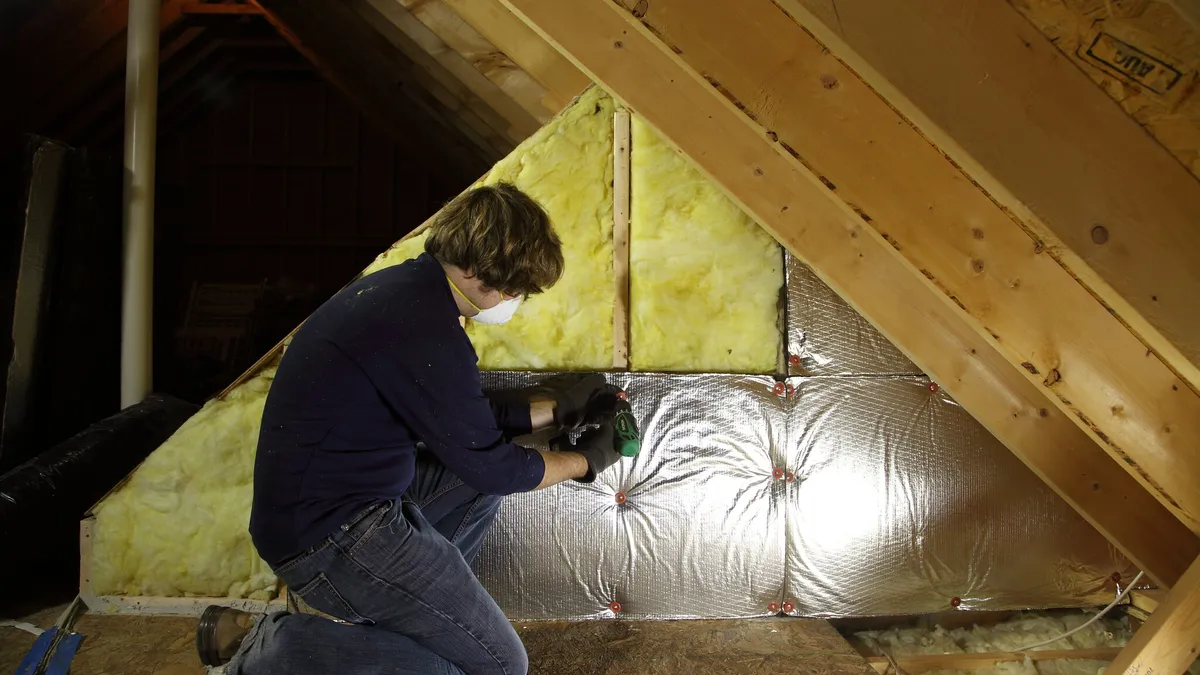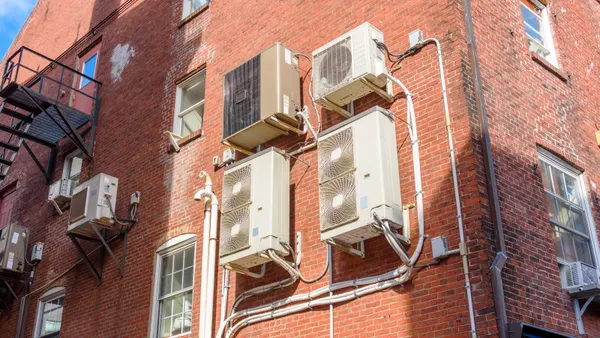Dive Brief:
- States and territories can now apply for more than $8.5 billion in funding to reduce energy usage and electrify appliances in homes through a pair of rebate programs created by the Inflation Reduction Act, the U.S. Department of Energy announced Thursday.
- DOE will offer application guidance in the “coming weeks,” the agency said, and will ask that priority go to homes that can save the most energy and for at least half of the program funds to go to low-income households.
- The rebate programs are an “unprecedented opportunity” to assist households struggling with high energy burdens, said Lowell Ungar, director of federal policy at the American Council for an Energy-Efficient Economy, known as ACEEE.
Dive Insight:
The $8.5 billion will be available through two programs targeting beneficial electrification and energy efficiency upgrades.
DOE said its Home Efficiency Rebates Program will offer $4.3 billion in formula grants to state energy offices to reduce the upfront cost of whole-home energy efficiency upgrades in single-family and multi-family homes. “The value of an eligible home’s rebate depends on the predicted energy savings attributable to the project,” the agency said.
And a Home Electrification and Appliance Rebates Program will offer almost $4.28 billion to reduce the upfront cost of efficient electric technologies in single-family and multi-family homes. The electrification program also provides $225 million in grants to Indian tribes, but DOE said guidance to apply for those funds will be coming in a separate announcement.
DOE plans to review applications for the two programs “on a rolling basis” with a Jan. 31, 2025, submission deadline.
The “groundbreaking” programs will allow households to lower the cost of upgrading home insulation, install heat pumps, purchase Energy Star appliances and make other improvements, said U.S. Secretary of Energy Jennifer Granholm.
The guidance includes minimum allocations for apartment and condo buildings and low-income households, which is “going to be critical to ensure underserved communities benefit,” ACEEE’s Ungar said. “Now it’s up to states to take full advantage of this funding and help their residents make home efficiency upgrades that will cut their monthly bills.”
“Efficiency and electrification go hand in hand,” said Keith Dennis, president of the Beneficial Electrification League. “These rebates will significantly lower the cost barrier for low-income consumers who stand to benefit the most from efficient electric technology.”
States and territories may launch their rebate programs once DOE has approved their application. Those applications must also include Community Benefits Plans “to assure funds are invested in good jobs and real economic opportunities,” the agency said.
An ACEEE policy brief details upgrades and appliances that can qualify for rebates, including: heat pumps, heat pump water heaters, insulation and air sealing, electric panel upgrades, efficient stoves and other uses.
DOE said forthcoming application assistance for states and territories will include technical help on rebate initiation and tracking systems; example responses to application questions “tailored to specific, optional rebate delivery mechanisms” such as weatherization programs and utility programs; and analytical support regarding program design.















